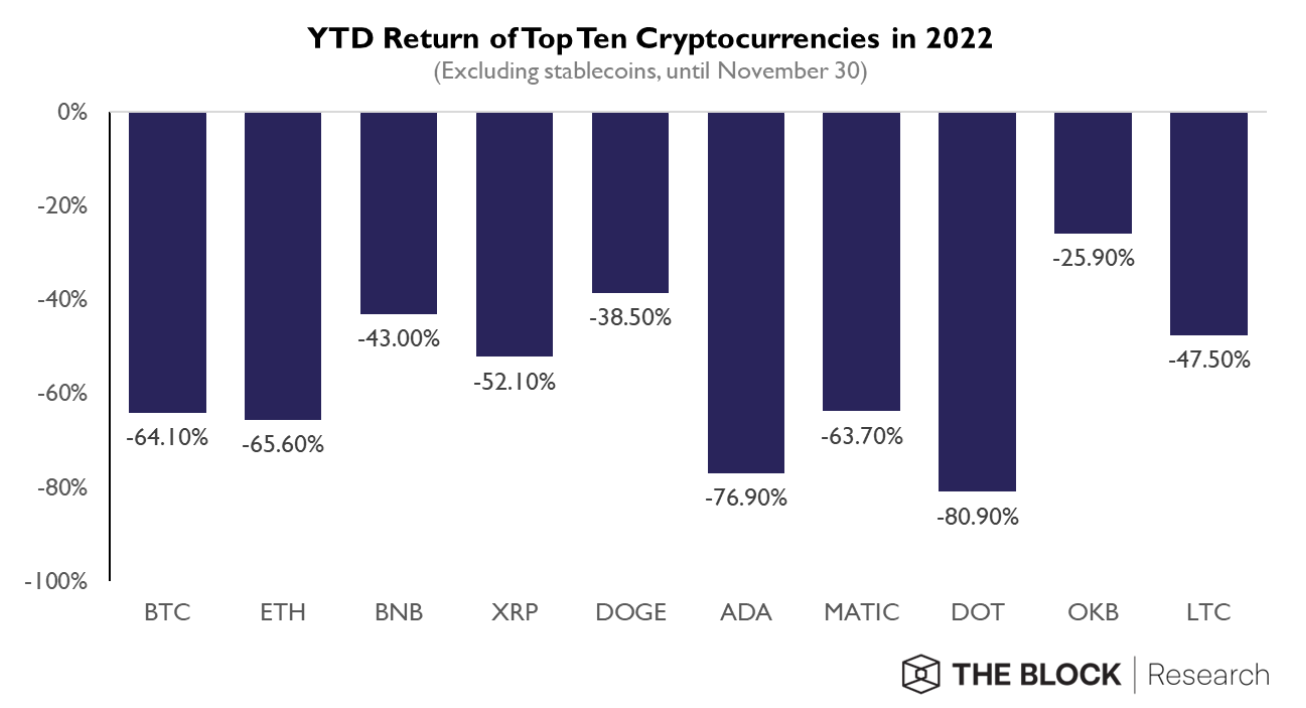Funding to cryptocurrency companies plummeted 42.5% in 2022, plunging from an all-time high (ATH) of US$37.08 billion secured in 2021 to US$21.26 billion last year, a new report by crypto data aggregator CoinGecko shows.
While the drop may appear significant, 2022’s figure indicates that crypto funding remained strong last year despite a challenging macroeconomic environment and market turmoil. In comparison, during the previous “crypto winter” of 2018-2019, crypto investments tumbled by a staggering 72.3%, plunging from US$16.2 billion to just US$4.5 billion in 2019, the report says.

Annual funding raised by cryptocurrency companies globally, Source: CoinGecko, Jan 2023
The relatively better performance in 2022 comes amid continued growth and innovation in the space and increased interest from institutional investors in segments such as decentralized finance (DeFi) and non-fungible tokens (NFTs), the report says.
In 2022, decentralized finance (DeFi) users growth averaged 44% quarter-over-quarter (QoQ), according to a separate report by crypto fund HashKey Capital. A milestone was reached in Q3 2022 when DeFi user wallets surpassed five million.
Adoption of NFTs also increased last year with monthly trading volume on Ethereum hitting a new ATH in January of US$5.6 billion, up 33.8% from its previous ATH, a report by The Block, an information services company dedicated to digital assets, says.
This growth came amid sustained support from investors in the crypto sector, in addition to increased adoption of crypto by large companies, HashKey Capital says. Instagram, for example, introduced a NFT feature in Q2 2022 and is now planning to add new capabilities such as enabling users to create their own NFTs and sell them directly to fans. Reddit says its users have opened over 2.5 million crypto wallets since its introduced its NFT marketplace in July. And Twitter is rumored to be working on integrating a crypto wallet.
2022 also saw some encouraging signs of institutional interest in crypto. The Fidelity 2022 Institutional Investor Digital Assets Study, which polled more than 1,000 institutional investors in Europe, the US and Asia during the first half of 2022, found that six-in-10 (58%) of the institutional investors surveyed had an allocation to digital assets, up six point from 2021’s 52%.
Increased interest from institutions was also evidenced last year by the slew of DeFi initiatives unveiled by traditional banking institutions and financial regulators. Huntingdon Valley Bank, a Pennsylvania chartered bank, got approved in July for a US$100 million loan on MakerDAO, a DeFi lending protocol; Project Guardian, an initiative spearheaded by the Monetary Authority of Singapore (MAS) focused on exploring the potential of DeFi and digital assets, completed its first live trades in November; and Dutch bank ING is reportedly exploring DeFi peer-to-peer (P2P) lending.
Crypto funding declines quarterly amid crypto winter, company collapses
In 2022, funding to crypto companies declined quarter-on-quarter (QoQ). Investments declined 41.8% in Q1, 32% in Q2, 38.9% Q3 and 17.1% in Q4.
The trend is in sharp contrast to 2021, during which Q1 started off with an impressive 229.2% QoQ growth, a surge that was fueled by hype from the so-called DeFi summer and greater institutional interest in 2020, the CoinGecko report says. This continued on for the rest of the year with a 33.2%, 20.9% and 66.8% QoQ increase in Q2, Q3 and Q4, respectively.
2022’s pullback in crypto funding came amid an ongoing crypto winter, which saw the total market capitalization being cut in half, starting off the year at US$2.2 trillion to hit an annual low of US$1 trillion in November, according to The Block.
Bitcoin fell below its 2017-high in June for the first time since January 2021 and extended its drawdown to -64.1% year-to-date (YTD). In fact, all the top ten cryptocurrencies by market capitalization, excluding stablecoins, generated negative returns, with Polkadot taking the biggest hit (-80.9%), followed by Cardano (-76.9%) and Ethereum (-65.6%).

Year-to-date return of top ten cryptocurrencies in 2022, Source: 2023 Digital Asset Outlook, The Block, Dec 2022
2022 also saw a series of massive company collapses and scandals that took a toll on the crypto industry.
In May, the collapse of the Terra stablecoin project and its associated Luna reserve asset cryptocurrency triggered a domino effect on the whole crypto market, ultimately contributing to insolvency troubles at both crypto lender Celsius and hedge fund Three Arrows Capital.
In November, FTX, once one of the world’s largest crypto exchanges, filed for bankruptcy protection after a dramatic series of events led to a run on deposits and a selloff of FTT, its in-house crypto token. Gross negligence has since been exposed.
FTX’s now former founder and CEO, Sam Bankman-Fried, was indicted on a range of charges, including wire fraud, commodities fraud, securities fraud, money laundering, and campaign finance law violations. Bankman-Fried pleaded not guilty. His trial is set to start on October 02, 2023 and he is facing up to 115 years in prison.
Featured image credit: edited from freepik
- SEO Powered Content & PR Distribution. Get Amplified Today.
- Platoblockchain. Web3 Metaverse Intelligence. Knowledge Amplified. Access Here.
- Source: https://fintechnews.sg/69134/crypto/global-crypto-funding-slumps-42-5-amidst-crypto-winter/





